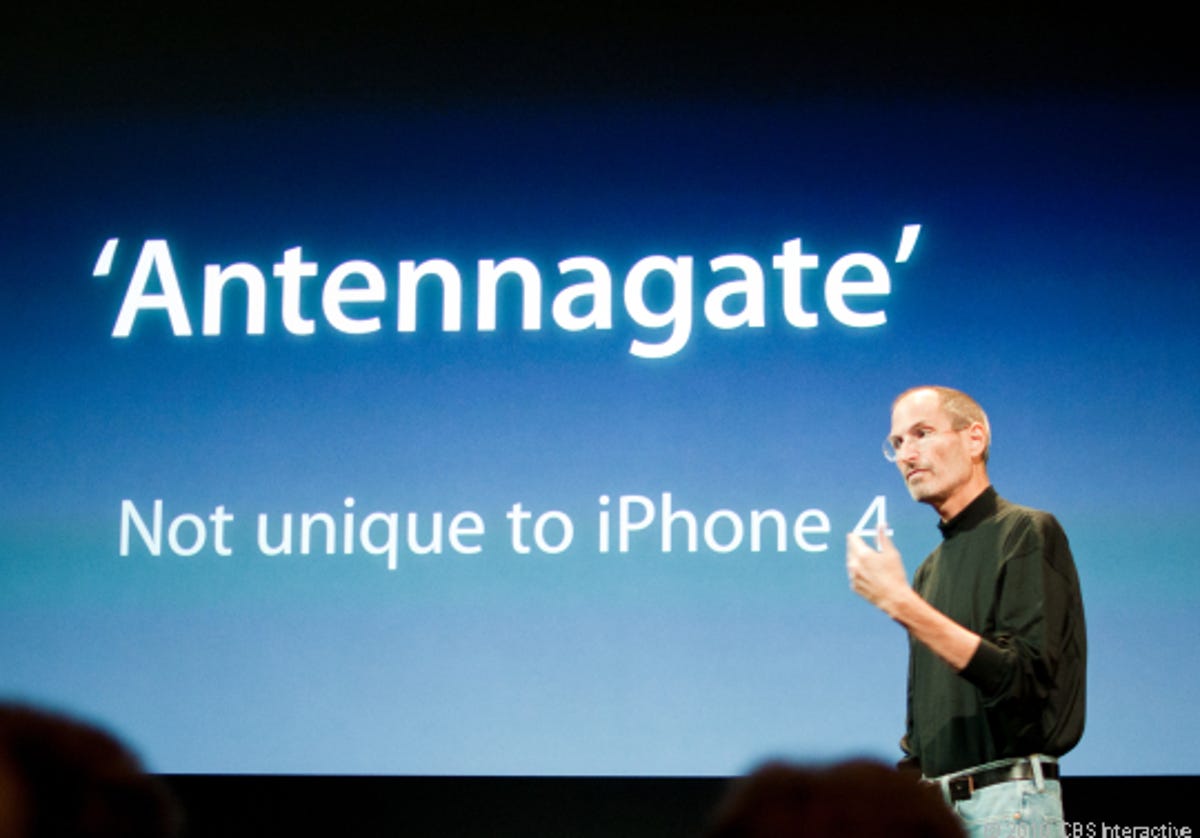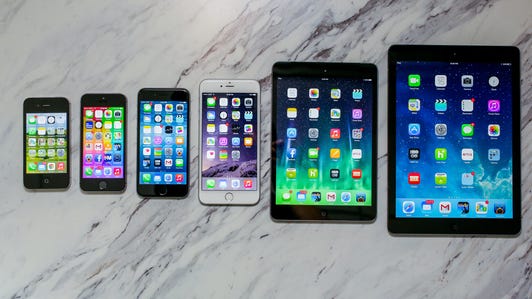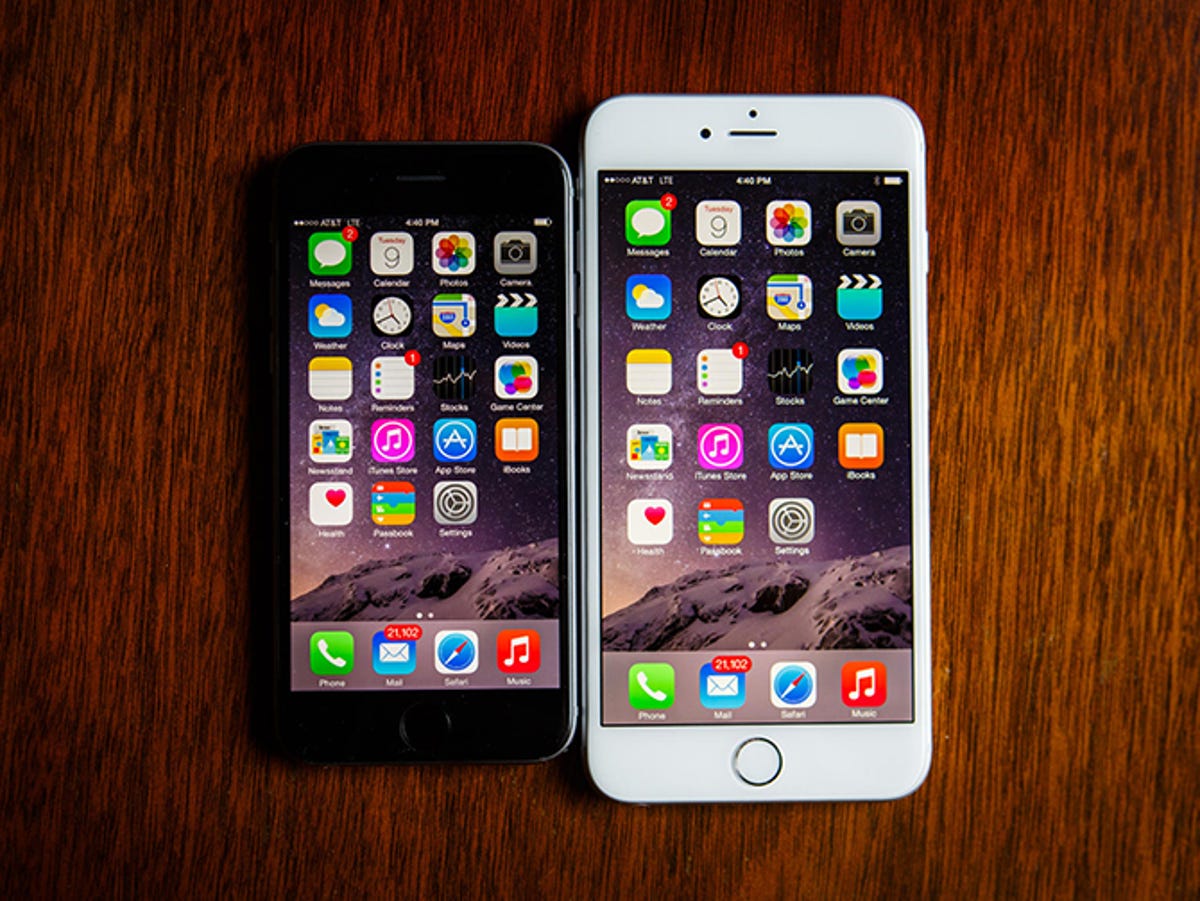Apple can’t nail it every time.

James Martin/CNET
Over the years, the Apple brand has become almost synonymous with “quality.” CEO Tim Cook as recently as this month stressed the care that Apple puts into building new products. That’s partly why the company has not rushed to release the Apple Watch, he said.
“We could have done the watch much earlier, honestly, but not at the fit and finish and quality and integration of these products,” he told Bloomberg Businessweek. “And so we are willing to wait.”
But Apple’s surely not perfect.
Wednesday marked the introduction — and swift recall — of an update to Apple’s iOS 8 mobile operating system. Apple pulled the software, iOS 8.0.1, following widespread reports from iPhone 6 and 6 Plus users that their devices could no longer connect to their cellular networks.
There also have been reports, and photos and videos, that the new iPhone 6 Plus bends easily when placed in someone’s pocket. The 5.5-inch device, introduced Friday, features a thinner and larger aluminum body than the 4-inch iPhone 5S. Experts say Apple’s quest to be thinner and lighter also comes with the consequence of making the device less sturdy.
Neither issue is particularly good PR for Apple, but the company has faced troubles before. We’ve contacted Apple for comment, but until now, it hasn’t said anything about the bendable iPhone 6 and has said very little about iOS 8.0.1. It has, though, promised to fix the problems caused by the software update with a second try, iOS 8.0.2, to be released “as soon as it’s ready in the next few days.”
Completely calling off a software update is a rare move for Apple, but iOS 8.0.1 isn’t the only time the company has messed up. The iPhone 6 Plus also isn’t the first device Apple has introduced with some design issues.
Here are four of Apple’s biggest product missteps:
Maps
Apple in September 2012 released its own homegrown mapping program along with its iOS 6 operating system. It previously had preloaded Google Maps on its devices, but tensions between the companies led Apple to create its own software. The trouble was — it didn’t really work.


Screenshot/CNET
iOS users immediately noticed problems with everything from navigation to simply searching for an address. Complaints included a lack of details, distorted images and erroneous directions. Grand Cayman was a sandy island devoid of roads. New York City’s Manhattan Bridge resembled a roller coaster, and things elsewhere were just plain out of whack.
The fiasco caused Cook to issue a public apology and to fire iOS chief Scott Forstall, one of former CEO Steve Jobs’ top lieutenants. Cook at the time said Apple “fell short on this commitment,” and he recommended alternative mapping programs until the company could fix the issues with Apple Maps.
“Everything we do at Apple is aimed at making our products the best in the world,” Cook said. “We know that you expect that from us, and we will keep working non-stop until Maps lives up to the same incredibly high standard.”
Apple has come a long way with Maps, but reviewers still say Google Maps is better.
Antennagate
Shortly after Apple released the iPhone 4 in June 2010, users starting noticing a problem with reception. When gripping the phone around the lower left-hand corner of the device, the signal degraded or calls were dropped.


Josh Lowensohn/CNET
Apple finally acknowledged the problem after the device had been on the market for about three weeks. Then-CEO Jobs told consumers the best way to fix the issue was to hold the phone differently. His other piece of advice: Buy a $29 rubber bumper to put around the phone so you don’t cover up the antenna.
When that didn’t resolve the problem, Apple held a press conference in mid-July to address what had been dubbed “antennagate” with a sea of data to show that other phones had similar issues. It offered to let people return the phone for a full refund and eventually handed out free cases to millions of customers at an estimated cost of about $200 million.
“We’re not perfect, phones aren’t perfect. But we want to make all our users happy,” Jobs said at the time.
The company also faced a class-action lawsuit that it eventually settled in 2012 by vowing to give US-based iPhone 4 customers $15 or a bumper case. It applied to customers who didn’t accept the free case the first time around.
See also
- Misfire! Apple yanks botched iOS 8.0.1 update
- Apple’s Maps app slammed over missing cities and other mistakes
- Apple gives free cases to iPhone 4 users
- MobileMe, a rare Apple screwup, finally bites the dust
Apple ended up issuing a software update that changed how the phone determined how many reception bars were display. It also tweaked the iPhone 4’s design to help fix the antenna issue.
The iPhone 4 also saw delays for the white version of the device. When Apple hosted its July 2010 antennagate press conference, it announced that the alternative white version of the iPhone 4 would be arriving in the US at the end of that month. Instead, the white model didn’t hit the market until April 2011. Apple blamed the nearly year-long delay on manufacturing issues.
Despite the initial problems with the iPhone 4, Apple sold millions of units of the device. By the time Apple offered the free cases in July 2010, more than 3 million customers had bought the iPhone 4, and millions more scooped up the device afterward.
MobileMe
MobileMe, the predecessor to Apple’s iCloud, was one of the company’s rare product flops. The promise of the service, launched in July 2008, was that it would keep a handful of things, like e-mail, calendars, contacts, photos and Safari bookmarks in sync across all gadgets — whether those were a Mac and an iPhone or a PC and an iPhone. Apple pitched its cloud service as “Microsoft Exchange for the rest of us.”
But MobileMe got off to a horrible start. The switch-over from Apple’s .Mac service to MobileMe had a delay and left users unable to access their data. People also had trouble signing up for the $99-a-year service in the first place. Once they were on, the service was plagued with a handful of outages, some of which would actually boot users from whatever they were doing on the site.


Apple
Apple responded to the initial stumbles by giving early adopters not one, but two free, 30-day extensions, as well as setting up a special status page that would list issues and tell people when they’d be back up and running. The company acknowledged that some people lost 10 percent of their e-mail between July 16 and July 18, 2008, during the height of the outage.
The whole affair left Jobs fuming. He admitted, through an internal memo leaked to the press, that it was a mistake to roll out the service at the same time it launched the iPhone 3G and other big products.
“The MobileMe launch clearly demonstrates that we have more to learn about Internet services,” Jobs said in the August 2008 memo. “And learn we will. The vision of MobileMe is both exciting and ambitious, and we will press on to make it a service we are all proud of by the end of this year.”
Apple ended up scrapping MobileMe, shutting down the service in June 2012. Instead, Apple now offers iCloud, a cloud storage service that’s had issues of its own.
iPhone 6 and 6 Plus launch
Consumers may have purchased 10 million iPhone 6 and 6 Plus units over the first weekend they were on sale, but the past month hasn’t been error free for Apple.
First, Apple was hit by a scandal about a week before the iPhone announcement after hackers stole nude photos of celebrities such as Jennifer Lawrence. The culprits took the images from the celebs’ iCloud accounts, causing worries that Apple’s service was vulnerable to attacks. Apple said the hack wasn’t a widespread breach but was the result of a targeted attack on user names, passwords and security questions.
Still, Apple beefed up iCloud security by quietly reactivating two-factor authentication. The feature offers another layer of security by requiring users to enter a second identifying feature in addition to a password. Apple also said it will now send email alerts and push notifications when someone tries to make password changes, restore date, or login to an account on a new device.
The iPhone 6 and iPhone 6 Plus face off against the competition (pictures)






+7 more
Apple also had some issues with the Sept. 9 iPhone 6 event itself. The company’s livestream of the announcement crashed, and many users heard a translator in place of Cook. The company also faced backlash from customers after giving all iTunes users a free copy of U2’s newest album. Many complained that they didn’t like the music or didn’t even know who U2 was. Apple ended up creating a website to tell iTunes users how to delete the album.
Then Apple’s online store suffered an outage for several hours when preorders for the new devices first became available at midnight Sept. 12. Customers had to go to carriers’ websites to order their phones, though T-Mobile and Sprint sites also were down for at least a couple hours.
And the day of the launch, Apple’s new digital line system didn’t work quite as planned. The service was supposed to collect the names and contact information of everyone in line for the iPhone at US-based Apple Stores, as well as which phone models they wanted. The customers would then receive an email or text with the reservation details, and they could leave the line and return later to buy the iPhone 6 or 6 Plus.


CNET
Instead, the system experienced a nationwide outage. East Coast stores eventually got it working, but stores in San Francisco and other areas opted not to roll out the system the first day the iPhone went on sale Sept. 19.
Apple also has faced some complaints around iOS 8, which is what compelled it to release the iOS 8.0.1 update in the first place. A bug prevented its new HealthKit feature, which will allow app developers to collect health information, from launching, and developers who made apps for HealthKit couldn’t yet introduce their software.
Apple sought to fix that problem and others with iOS 8.0.1. Instead the software prevented iPhone owners from connecting to their cellular networks. iPhone owners also reported issues with Touch ID after downloading the update, with some noting that the feature — which allows people to unlock their phones using their fingerprints — was no longer working.
As of Wednesday night, Apple didn’t yet have a fix for iOS 8 but said it was “actively investigating these reports.” It also has been mum about the bendable iPhones. Tune back to CNET for more information as the situation develops.
The glorious glitches of Apple Maps






+3 more



